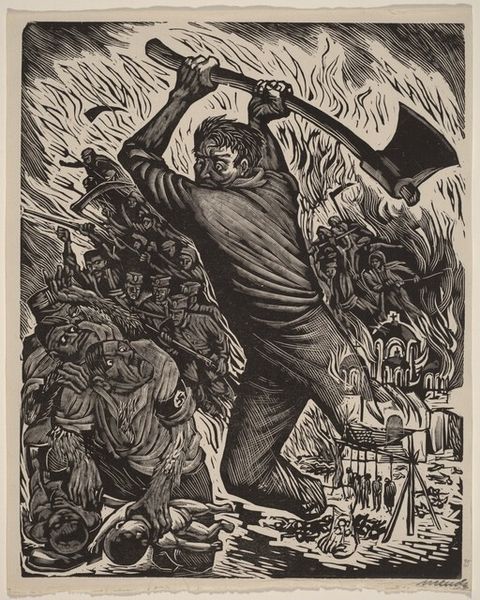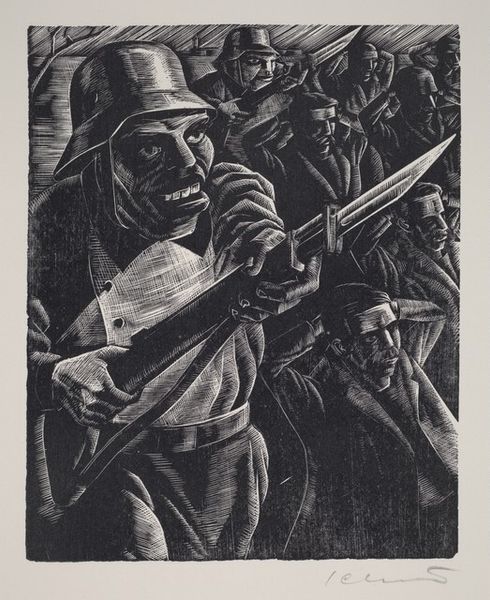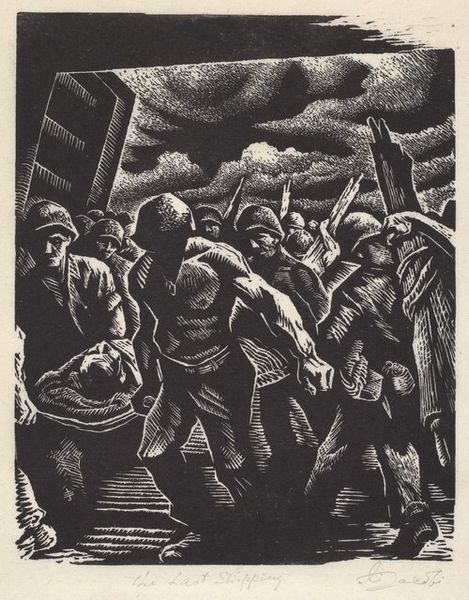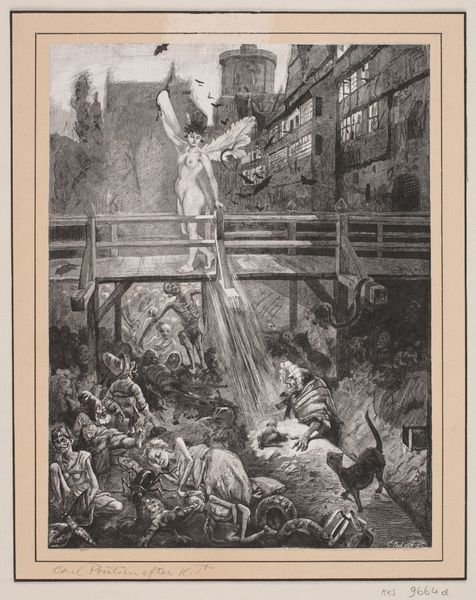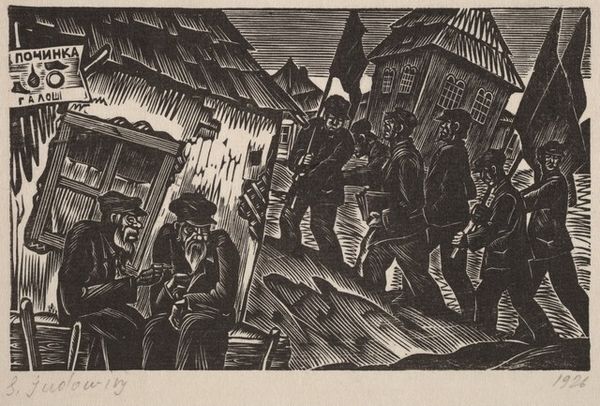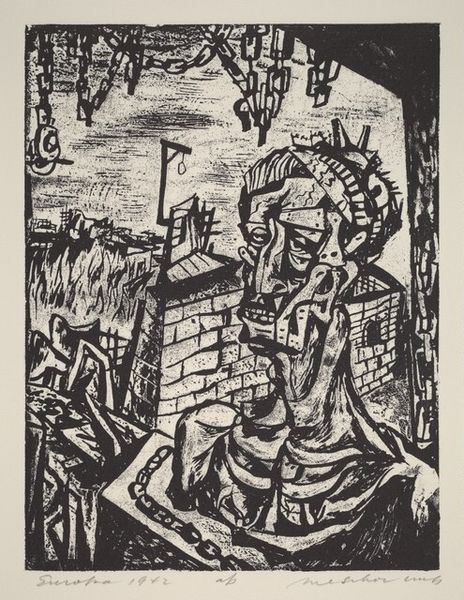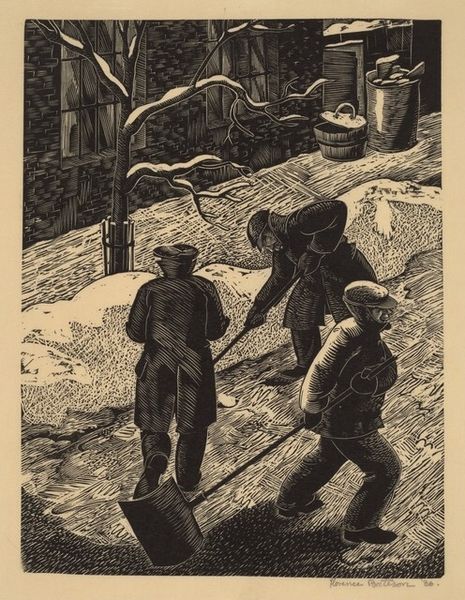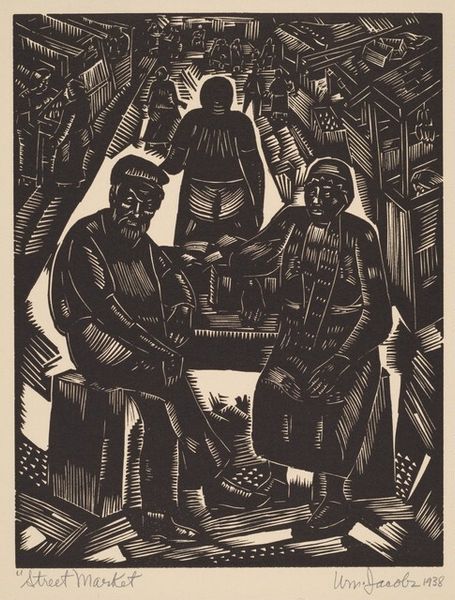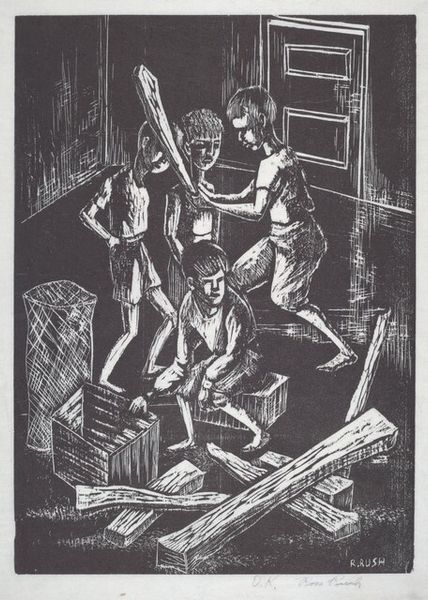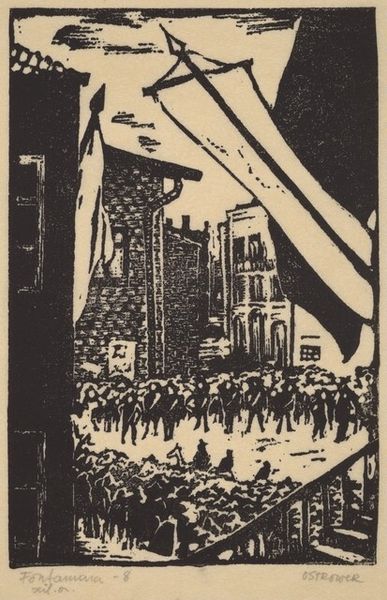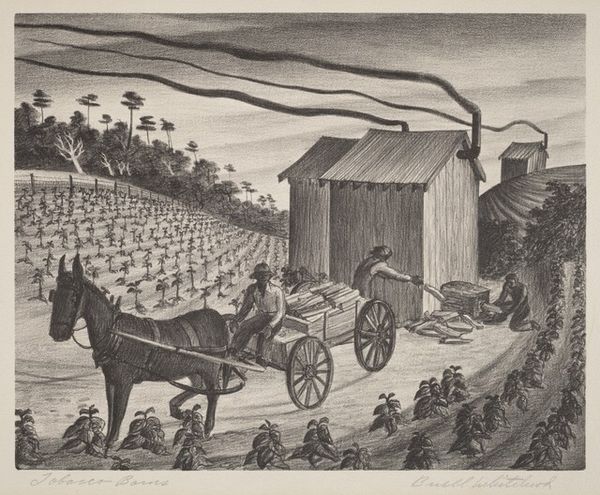
print, relief-print, woodcut
# print
#
relief-print
#
landscape
#
figuration
#
social-realism
#
woodcut
#
history-painting
Dimensions: image: 26.99 × 22.23 cm (10 5/8 × 8 3/4 in.) sheet (irregular): 41.28 × 30.64 cm (16 1/4 × 12 1/16 in.)
Copyright: National Gallery of Art: CC0 1.0
Editor: This is "Land of Plenty," a 1936 woodcut by Lucienne Bloch. The strong contrast of the black and white really strikes me; it feels like the artist is emphasizing certain details. How do you interpret this work? Curator: This piece demands that we consider the socio-political context in which it was created. Look at the family depicted: African Americans against a backdrop of both agricultural abundance and technological advancement—represented by the cornfield and electrical towers, respectively. How do these symbols intersect, especially considering the history of exploitation and inequality faced by Black communities in the 1930s? Editor: So, it's not simply a celebration of prosperity, but also a commentary on its unequal distribution? Curator: Precisely. The fence separating the family from the cornfield, that "land of plenty", isn't just a physical barrier. It symbolizes the systemic barriers preventing access to resources and opportunities. Who benefits from this plenty, and at what cost? What does it mean to have these technological marvels towering over a community that is systematically disadvantaged? Editor: I see, it reframes the whole image. The electrical towers, which I initially thought represented progress, now seem almost imposing, looming over the family. Curator: Indeed. Bloch, through the visual language of social realism, compels us to confront the uncomfortable realities of power, race, and access during the Great Depression. Is this "land of plenty" truly for everyone? This is a print that challenges viewers to question the narratives of progress we often take for granted. Editor: Thank you, I hadn't considered all those layers. It gives me a new perspective on how art can reflect and critique society. Curator: Absolutely. Art is at its most vital when it provokes such dialogue and prompts us to consider our place in the ongoing narrative of history.
Comments
No comments
Be the first to comment and join the conversation on the ultimate creative platform.
